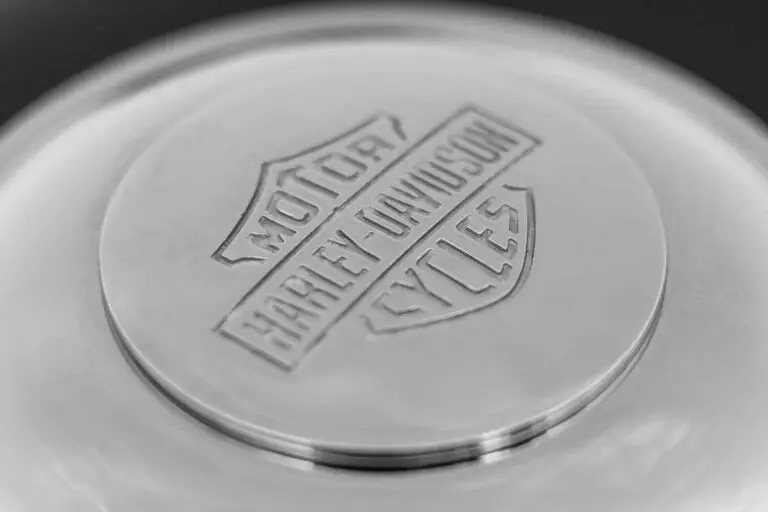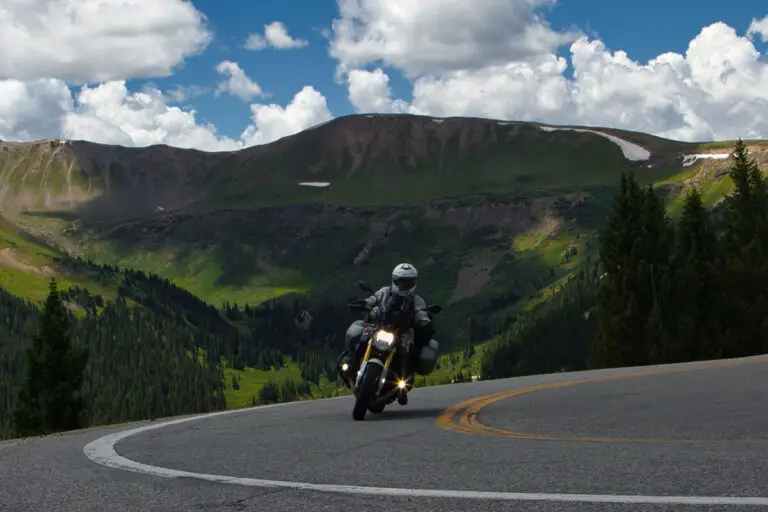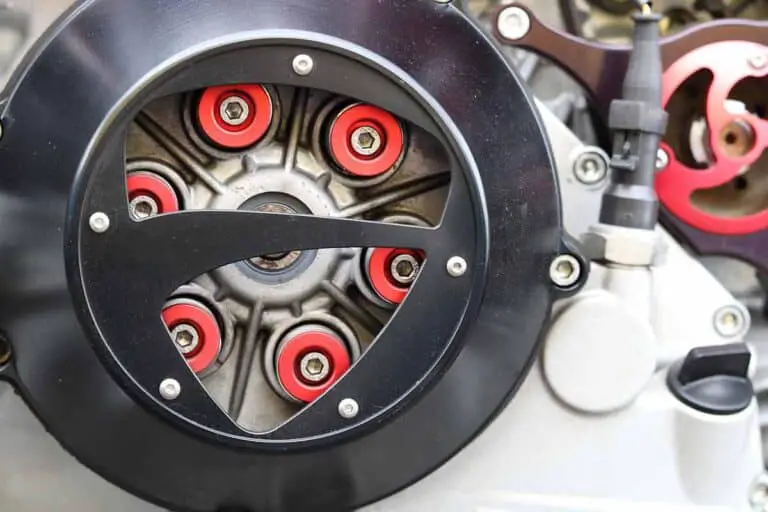Scooter vs Motorcycle: Which Is Better? (Pros & Cons)
Disclosure: We may get commissions for purchases made through links in this post.
In an ideal world, every motorhead would have a scooter and a motorcycle in their garage. Why? Because not all two-wheelers thrive on abuse and minimal upkeep — hence, the need for two bikes to be used alternately. However, this is a far reality for many consumers and why most are compelled to choose between a scooter and a motorcycle.
Choosing a scooter over a motorcycle (or vice-versa) is often preferential. But between these two, motorcycles undoubtedly do better in high-speed, long-distance driving and traversing different terrain. Scooters are more accustomed to daily commutes and stop-and-go traffic.
There is no single reply to the question, “Which is better?” when considering all types of scooters and motorcycles. After all, each has its fair share of praiseworthy qualities and drawbacks.
However, certain parameters and situations make one of these wheelers outshine the other — as you will later discover in today’s article.

Scooter vs Motorcycle Comparison
Design
Although this facet is not ordinarily used as a baseline for determining the better two-wheeler, it is a good point to discuss as it clearly defines a motorcycle from a scooter. Additionally, specific aspects of the respective designs of these bikes gravitate enthusiasts and casual riders towards them.
Motorcycles are known for their naked chassis, chrome fenders, and alloy wheels (view on Amazon). These elements (along with signature features exclusive to some OEM offerings) give the motorcycle its cool attitude and rugged charm.
Conversely, scooters are famous for their leg shields, platforms, and step-through frame (which makes ingress and egress easier).
Application and Travel Options
Between motorcycles and scooters, the former offers a wider array of applications. While scooters can be used for daily commutes and long-distance riding, motorbikes serve many more functions other than these two.
In addition, they can be used non-stop to cover longer distances (roughly 180—250 miles) compared to the 75—95 miles that scooters traverse on average.
Throughout the years, the underbone scooter has morphed into the following: three-wheeled, enclosed, fuel-injected, electronic, and maxi-scooters. There are at least 10 motorcycle sub-categories — each designed for specific applications (as enumerated below):
- Standard/Naked
- Sportbikes
- Cruisers
- Tourers
- Sport-tourers
- Off-road
- Dirt/Track
- Dual-sport/ADV
- Supermoto
- Youth
- Electric
Though some of them have overlapping functions due to advancements in motorcycle technology and design, what is clear is that their scope is more encompassing when pitted against different scooter types.
Storage
While two-wheeler storage pales in comparison to that of vehicles, scooters typically have better leverage than motorcycles in this area. Scooters like Vespa have under-seat storage roomy enough to fit one full-face helmet or shopping bag.
Conversely, motorcycles come standard with mere rear racks (sometimes, even none). Tourers/cruisers are, by far, the only bike class with under-seat compartments.
But even these need to be supplemented by GIVI Gravel-T 35 Liter Unifit Saddlebags (view on Amazon) to provide riders with decent storage.
Fuel Efficiency
Scooters and motorcycles collectively have better fuel efficiency than automobiles. But against each other, things are not so clear-cut. After all, fuel economy is contingent on powertrain specs, augmenting components, and required fuel (to name a few). To prove this point, sport-touring motorcycles are infamous for poor energy savings.
Generally, however, scooters fall behind motorcycles in fuel efficiency. And below are the top factors contributing to this:
Engine Capacity
Small-displacement, gasoline-fed engines (which is what most scooters have) may achieve their optimal efficiency and mechanical power output at different RPMs. However, the constant is that this happens “closer to full throttle and at higher RPMs” compared to motorcycles with slightly bigger engine capacities.
Transmission
Scooters often have CVT or automatic transmissions with a spring-loaded centrifugal clutch (view on Amazon). With this layout, the rear-wheel clutch does not connect until the scooter hits a certain RPM mark.
While it is not an inherently bad design, this configuration results in more fuel waste during initial acceleration than motorcycles with manual transmissions.
Wheel Diameter
Although smaller wheels are a much-desired feature of scooters, it proves detrimental during acceleration since it increases brake-specific fuel consumption.
Some folks may disagree with the 3rd point, which is completely understandable. After all, larger tires used on motorbikes are supposed to adversely affect fuel economy due to their weight and higher rolling resistance.
But with scooters, fuel waste from acceleration is aggravated by its diminutive wheels — hence taking a toll on its fuel efficiency.
Riding Conditions

Undeniably, weather, length of distance, and road conditions can impact your ability to ride your motorcycle or scooter, as well as the frequency by which you do so.
When the weather is nice and warm, it is hassle-free (not to mention fun) to ride these two-wheelers daily. However, this sentiment tends to change alongside climatic conditions bringing strong winds, heavy rain, snow, or extremely high temperatures with them.
Rain on its own is not that huge of a hindrance to daily riding, given that riders can avail of good waterproof gear like Tourmaster Defender 2.0 Two-Piece Rain Suit (view on Amazon) nowadays. The problem is how well a motorcycle vs scooter will perform on slick roads.
A scooter (especially an electronic one) may slip at turnarounds or corners, as painted ground and metal/brick surfaces can become slippery during and after inclement weather.
A motorcycle has the same tendency, though not to the same degree. While motorbikes may flip, tip over, or require a longer braking distance to stop, they generally provide better grip on tarmac.
Paired with sound driving skills and ABS, they do much better in the rain. Scooters are not as fortunate to have ABS as a standard feature, as they typically have a piston displacement within 150cc.
Winter season is when a scooter and a motorcycle would be on the same boat. Using either under these conditions is an absolute no, especially when roads are already laden with snow.
Not only will it be freezing for the rider, but on-road safety is also compromised since tires can harden and lead to loss of traction and control over the two-wheeler.
Handling
When comparing scooter vs motorcycle performance in city driving, both wheelers are highly maneuverable and can weave in and out of bumper-to-bumper traffic situations. Things get subjective when it comes to long rides, with only certain models and categories from each two-wheeler being up to the task.
However, motorcycles prove to be inherently more adept in high-speed riding. This is largely due to their wheel size and power-to-weight ratio, which is at least twice better than regular scooters.
You may attempt to do the same on a scooter by upgrading stock tailpipes to an aftermarket exhaust like YOSAYUSA Complete Exhaust System (view on Amazon). But unless you have a capable powertrain, you may not get the same results.
Maintenance
Whether done professionally or DIY, bike maintenance is much more manageable than car maintenance. Two-wheelers simply last longer and have bigger aftermarket support compared to vehicles. Moreover, replacement parts are more affordable, making them easier to procure.
On the flip side, the design of scooters and motorcycles do not make them a viable option for the indolent rider. That is because their constant exposure to the elements makes them prone to developing various types of buildup that can eventually damage the scooter or motorcycle if not promptly addressed.
Even when pitting same-class thumpers against each other, there is no cookie-cutter way to determining the better ride if we look at scooters and motorcycles wholistically. However, this tends to change with specific components.
Motorcycle wheels, for instance, are more robust than those mounted on scooters — meaning they will last longer and require half the frequency of servicing or replacement in case of puncture or wear.
The same applies to usage-related maintenance. For example, scooters are built for low-to-moderate riding speeds and stop-start operation. As such, they can outlast same-class motorcycles used for urban driving.
Furthermore, there is less strain on transmission and brake components, which translates to servicing these parts at wider intervals.
Safety
Riding a scooter or a motorcycle is undoubtedly more dangerous than riding a car. Putting your leg over a two-wheeler increases the likelihood of theft and incidents, as the rear composite rack and leg shield are never enough to protect you from physical injury.
Moreover, minor on-road details like loose gravel and potholes that seem inconsequential for vehicle drivers can now put rider safety at risk.
It also does not help that, visually, scooters and motorcycles appear close to negligible for some motorists on the road. Their smaller size and somewhat unremarkable presence cause many vehicle drivers to overlook these thumpers, leading to physical injuries and accidents.
Gear
There is no circumventing this fact. The most that riders can do to reduce safety risks is to gear up. Between a scooter and a motorcycle, helmets top the list of must-haves, followed by gloves, elbow and knee guards, and riding-appropriate shoes or boots.
Motorheads who are into sporty or aggressive riding, in particular, may need to add chest and spine protectors or body armor to their arsenal.
Scooter riders can opt for a 3/4 face helmet, although I strongly suggest choosing a flip-up or full-face helmet like Shoei Unisex Adult Full-Face Helmet (view on Amazon) instead for better protection. An all-weather jacket would be a great addition, too, regardless of riding a scooter or motorcycle.
Regarding theft, riders can secure their motorcycles or scooters by purchasing security chains, an alarm disc lock (view on Amazon), a brake lever or grip lock, and post-theft gadgetry (among others).
They serve as additional lines of defense and prevent thumpers from rolling away into oblivion. Some of these anti-theft devices may not fit older scooter or motorcycle models, so best to check with your dealer.
Comfort
This aspect of riding is not as straightforward as many riders hope it would be and is not exactly an objective measure when comparing a scooter vs a motorcycle. It is highly contingent on one’s perception of comfort and how it ties in with the bike or scooter’s intended application.
That said, there is no clear winner between the two, especially when comparing like-displacement models.
For some, comfort translates to creature comforts such as seats, footwells, wheel size, and gadgetry. For others, it translates to long-distance comfort, ease of handling, and suspension geometry.
Naturally, scooters and motorcycles will score differently in these areas when assessed — hence, there is no direct comparison between these thumpers.
Bare-bone scooters typically have a leg shield and come with a platform, smaller wheels, under-seat storage, and broader seats. Meanwhile, maxi-scooters come standard with charging ports, cup holders, ample storage, and other touring-oriented features.
The same can be said for motorcycles, which feature some or all of these extras contingent on their trim package, displacement, and sub-category.
Price
Between a scooter and a motorcycle, the former is generally more affordable regarding listing price, insurance, and maintenance costs. While this may somehow change as you go up the displacement spectrum, maxi-scooters still end up cheaper than same-class adventure bikes and cruisers.
Of course, there are exceptions to the rule, like the BMW C 650 GT and Vespa 946 Christian Dior Edition. But then again, you would not find the average consumer owning these scooters.
Shared Benefits & Drawbacks

Pros
- Motorcycles and scooters are less complicated than four-wheelers, which makes for a less-daunting appeal and easier maintenance.
- Both two-wheelers have offerings that are beginner-friendly.
- Styling always has aerodynamics in mind.
Cons
- Riding two-wheelers are generally less comfortable than driving a vehicle due to constant exposure to the elements and a greater requirement for physical strength.
- Both scooters and motorcycles are not viable logistics options and can only go to the extent of supporting pillion riding with a light-to-moderate load.
- Scooters and motorbikes have limited features and accessories typically enjoyed in a four-wheeler, such as radio and air conditioning.
- Riding in high temperatures can become agonizing, compelling riders to have a water bladder and wear perforated riding pants, a cooling/meshed vest, and a helmet with vents.
- In some regions, riding a scooter or a motorcycle requires a separate license from the one you already have for owning a car.
Conclusion — Scooter vs Motorcycle
There are more nuances to which is better between scooters and motorcycles than the ones detailed in today’s guide. So much so that most riders would reply with, “Either is a good choice!” when asked for their opinion.
Hopefully, this post helps you draw the line and figure out your priorities when choosing your ride. Because ultimately, you should call the shots when taking your pick between the two.







